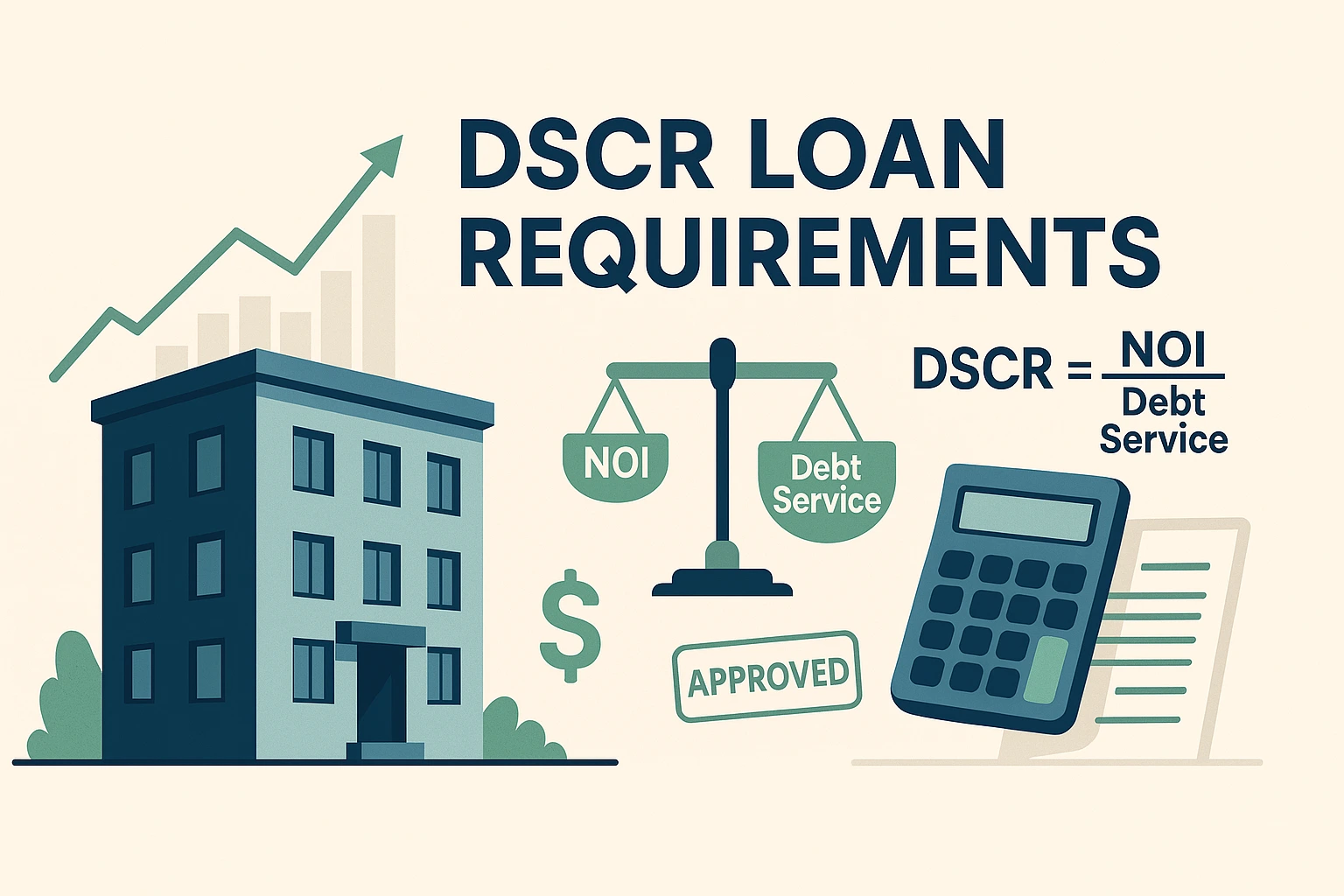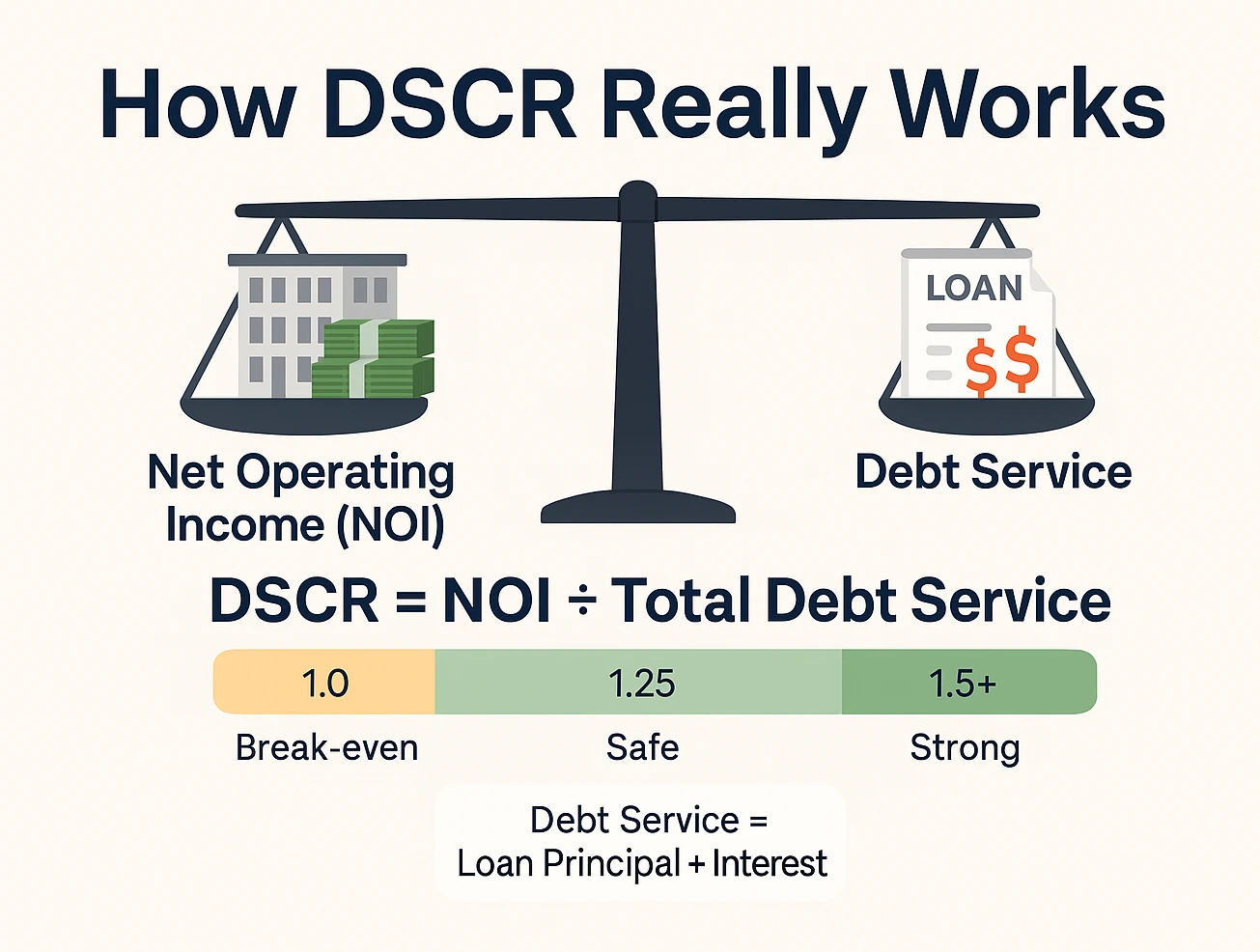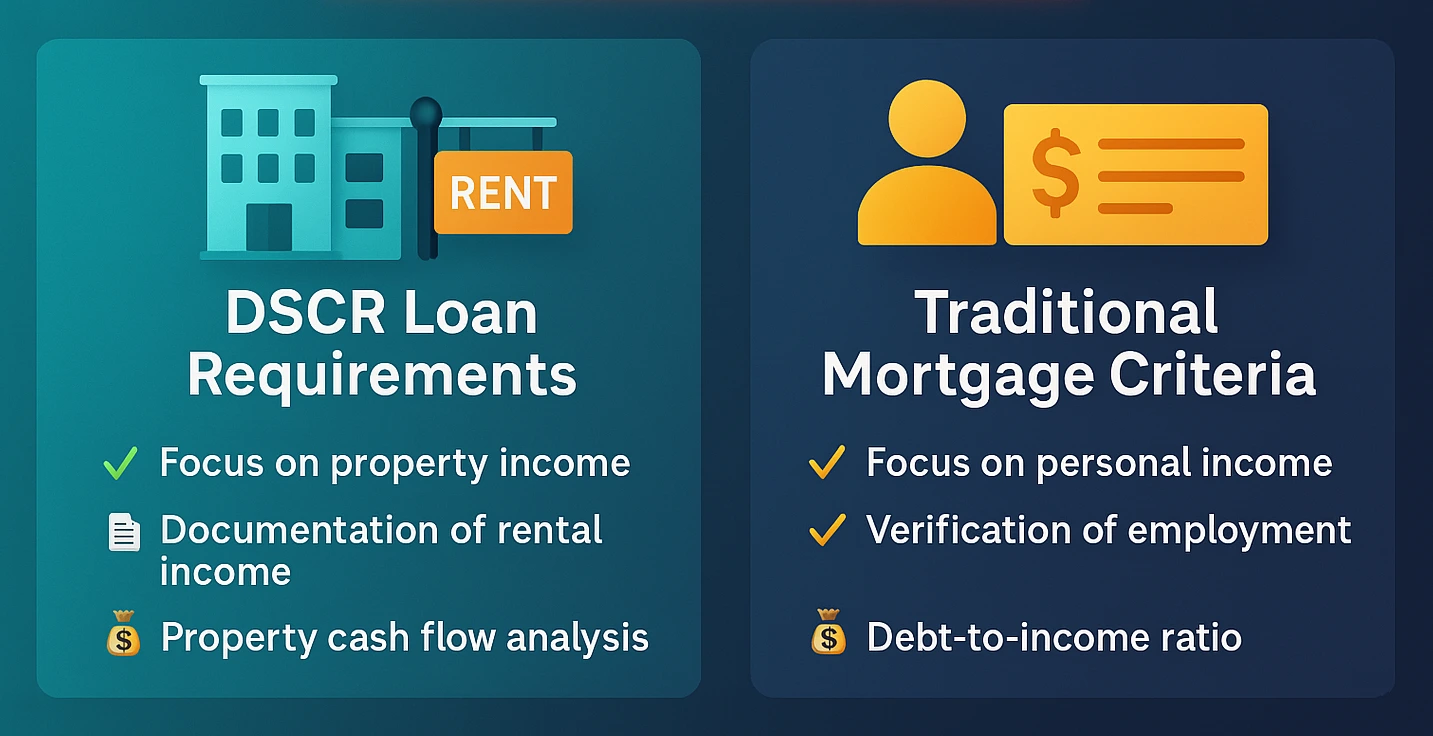
Tired of personal income hurdles stalling your real estate empire? Unlock the secret to DSCR loan requirements and let your property’s cash flow fuel explosive growth. This game-changing financing sidesteps traditional barriers, empowering investors to scale portfolios with confidence — all within the framework of a dscr loan explained guide that helps you understand how these loans truly work.
DSCR Loan Requirements: What Lenders Won’t Tell You (But You Need to Know)
Securing the right financing can make or break your real estate investment journey. Among the more specialized options for property owners and real estate investors is the Debt Service Coverage Ratio (DSCR) loan. Unlike traditional home loans that rely heavily on personal income, debt-to-income (DTI) ratios, and other personal financial details, DSCR loans primarily revolve around the property’s net operating income (NOI). Lenders use DSCR to determine if your rental property generates enough cash flow to cover its mortgage obligations.

While many lenders highlight the basics—like how DSCR compares your net operating income to total debt obligations—there are key details about DSCR loans that often go unexplained. Understanding these requirements is crucial for maximizing your approval chances and negotiating favorable terms. If you’re a real estate investor or property owner seeking to expand your portfolio, this guide will help you leverage your property’s cash flow to qualify for loans that might otherwise remain out of reach. For a deeper dive into eligibility criteria, check out our guide on how to qualify for a DSCR loan.
To calculate DSCR:
DSCR = Net Operating Income (NOI) / Total Debt Service
- Net Operating Income (NOI) usually includes your rental income minus operating expenses (like property taxes, insurance, and maintenance).
- Total Debt Service is the monthly principal and interest payment on the proposed loan (and sometimes includes additional debt obligations specific to the property).
When this ratio is 1.00 or higher, the property’s income can cover its debt. However, most lenders set higher DSCR thresholds to ensure extra cushion—often at 1.20 or 1.25, though 1.15 is sometimes acceptable for properties with strong market potential.
Why DSCR Matters to Real Estate Investors
Your property’s cash flow becomes the primary factor in loan approval with DSCR financing.
If you’re a real estate investor, your ability to borrow hinges less on your personal financial statements and more on how well your properties can service their debts. A higher DSCR indicates robust cash flow, giving lenders confidence in your ability to make monthly payments. That translates into potentially better interest rates, larger loan amounts, and more flexible repayment terms.
On the flip side, a lower DSCR—even if you have excellent personal credit—raises red flags. Lenders will wonder if market fluctuations, vacancies, or unexpected expenses might compromise your ability to stay current on the loan. Understanding DSCR loan requirements (and how to optimize them) is essential if you want to build and scale your portfolio efficiently.
Core DSCR Loan Requirements
These key factors determine your eligibility for DSCR loan approval.
Minimum DSCR Ratio
Most lenders look for a minimum DSCR of 1.20 to 1.25. However, some boutique or specialized lenders might entertain ratios as low as 1.15, especially if you have compensating factors like strong liquidity or secondary collateral. The bottom line: your property must generate enough net income to comfortably cover debt obligations, with room to spare for contingencies.
Credit Score Benchmarks
While DSCR loans revolve more around property income than personal financials, your credit score still matters. Many lenders impose a minimum credit score of around 620—though some prefer 680 or higher for the best interest rates and terms. A lower credit score doesn’t always disqualify you, but expect stricter terms or additional requirements, such as a higher down payment.
Property Condition and Appraisal
A comprehensive appraisal determines if the property’s current value (and potential rental income) justifies the loan size. Additionally, the condition of the property (e.g., whether it’s turn-key or a fixer-upper) can influence the final approval. Properties in disrepair or that require significant renovations might need special consideration—or additional funds in escrow—before the lender feels comfortable providing DSCR-based financing.
Expert Analysis: The Real Implications of DSCR Loans
DSCR loans offer unique advantages but come with specific considerations.
From an expert investor’s vantage point, DSCR loans are game-changers for rapid portfolio expansion. By focusing on each property’s cash flow rather than the borrower’s personal DTI ratio, DSCR loans unlock a range of opportunities. That said, you should be aware that (for more insights, see this National Association of Realtors resource):
- Interest rates might run slightly higher than traditional mortgages, compensating lenders for the added risk.
- Loan-to-Value (LTV) ratios may be more conservative (often around 75%–80%), requiring you to put more money down compared to a conventional loan.
- Property type (single-family vs. multi-family, commercial, mixed-use) can influence how aggressively lenders weigh your DSCR. For instance, financing mixed-use properties may require tailored strategies to meet lender expectations.
In competitive real estate markets, meeting or exceeding DSCR thresholds positions you as a less risky borrower. When lenders trust you, you can negotiate for more favorable terms like lower origination fees, better interest rates, or faster approval times. To explore top lenders who prioritize investor-friendly terms, review our analysis of the best DSCR lenders for 2025. Overall, prioritizing DSCR loan requirements is a powerful way to secure sustainable, long-term financing.
DSCR vs. Traditional Mortgages

Here’s how DSCR loans compare to traditional mortgage options:
| Key Metrics | DSCR Loan Requirement | Traditional Mortgage |
|---|---|---|
| Primary Qualification | Property’s DSCR & Cash Flow | Personal Income & DTI |
| Typical DSCR Range | 1.15–1.25 or higher | N/A (Focus on personal debts) |
| Credit Score Minimum | Around 620, some lenders prefer 680+ | Lower thresholds possible (e.g., 580 for FHA) |
| Loan-to-Value (LTV) | Typically 75–80% | Up to 95%+ with certain programs |
| Interest Rates | Slightly higher than conventional | Often lower but stricter credit/income checks |
| Approval Speed | Faster once property income is verified | Can be slower due to personal vetting |

Critical Bulleted Summary
Key points to remember about DSCR loans:
- Focus on Property Income: DSCR loans prioritize your property’s cash flow over personal finances.
- Minimum DSCR: Aim for a DSCR of 1.20 or higher to qualify.
- Credit Score Impact: A score of 620+ helps, but 680+ unlocks better rates.
- Down Payment: Plan for 20–25% down for most DSCR loans.
- Better Terms: Higher DSCR ratios can secure lower rates and flexible terms.
How Lenders Evaluate Your DSCR
Lenders consider multiple factors when assessing your property’s cash flow for DSCR loans.

- Property’s Gross Income: Typically, this is your expected rental income. However, lenders may use market rent estimates or actual lease agreements to ensure your projections are realistic.
- Operating Expenses: These include taxes, insurance, maintenance, and even management fees if you’re using a third-party manager. The more accurately you document these expenses, the more accurate your final DSCR calculation will be.
- Debt Service: This is your monthly mortgage payment (principal + interest). In some cases, lenders will also factor in additional obligations (like existing property liens or secondary financing).
- Vacancy and Reserve Requirements: Some lenders apply a vacancy rate (often around 5–10%) as a stress test. They want to see if the property can still cover the mortgage should occupancy temporarily drop.
A property’s stabilized DSCR is especially important for multi-unit or commercial properties. Lenders want to verify that your asset will maintain its cash flow even during market shifts or economic downturns. For example, properties like Airbnb rentals may face unique lender scrutiny due to their income variability, as discussed in our guide on DSCR loans for Airbnb properties.
Expert Quote
Expert Insight: “DSCR loans allow investors to separate their personal finances from their portfolio’s performance. If your property meets a strong DSCR threshold, it’s a powerful leverage tool for building long-term wealth.” – John Smith, Real Estate Investment Advisor
Additional DSCR Requirements You Should Know
Beyond the basic DSCR ratio, lenders consider these important factors:
Down Payment Amounts
Most DSCR loans require 20–25% down. A larger down payment indicates you have more skin in the game, reducing the lender’s risk. If your DSCR is borderline, offering a bigger down payment might help you secure approval or a more favorable rate.
Cash Reserves
Real estate investors should have at least 6–12 months’ worth of reserves to cover principal, interest, taxes, and insurance (PITI). Lenders frequently check these reserves to ensure you can maintain the property if it experiences any cash flow hiccups (e.g., vacancy or unexpected repairs).
Property Income Documentation
Some lenders require lease agreements, rental history, or even a rent roll for multi-unit properties. Others might accept a market-based approach using comparable rents. The stronger your documentation, the more confident lenders feel in your DSCR calculation.
The Application Process for DSCR Loans
Here’s what to expect when applying for a DSCR loan:
- You share basic details about your credit score, property details, and investment goals.
- The lender performs a preliminary DSCR calculation based on estimated or actual rental income.
- The lender orders an appraisal and collects documentation like rent rolls or leases.
- Underwriters determine if your property meets minimum DSCR thresholds.
- If your DSCR is comfortably above 1.20, use this leverage to negotiate a better interest rate.
- Clarify your LTV, loan term, and any prepayment penalties.
- Once conditions are cleared (appraisal, title checks, insurance), the closing date is set.
- You finalize the loan, ensuring all funds (down payment, closing costs) are available.
- Keep an eye on your DSCR to maintain a healthy cushion.
- Monitoring your cash reserves and updating your lender if major property changes occur is crucial.
Key Takeaways
- DSCR Target: Secure a smoother approval with a DSCR of 1.20 or higher.
- Credit Score: Aim for 620+; 680+ unlocks better loan terms.
- Down Payment & Reserves: Plan for 20% down and 6–12 months of reserves.
- Income Documentation: Provide strong rental income records to boost lender confidence.
- Negotiate Terms: Use a high DSCR to land lower rates and flexible terms.
Frequently Asked Questions
Conclusion
DSCR loans offer a powerful financing solution for real estate investors. If you’re considering other property types, such as modular homes, explore our guide on modular home loan requirements for similar financing insights.
When you understand DSCR loan requirements, you empower yourself to access financing that’s both flexible and growth-oriented. By focusing on the property’s cash flow, DSCR loans give real estate investors a powerful pathway to scale their portfolios, sometimes more seamlessly than with traditional mortgages.
Remember to keep your DSCR above 1.20, maintain adequate reserves, and provide thorough documentation of rental income. With these elements in place, you’ll stand out to lenders—and unlock the real potential of your investments.
Don’t Let Cash Flow Kill the Deal
Get Up to $50K in DSCR-Friendly Personal Loans